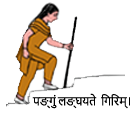Spondylarthritides are a group of diseases characterized by the involvement of the spine as well as joints. Ankylosing spondylitis is a prototype of these diseases. Other causes of spondylarthritides in adults and children include psoriasis, inflammatory bowel diseases, and genitourinary or bowel infection. Rigidity of the spine is common sequelae of these diseases. Around 0.25% population in India is estimated to be affected by these diseases.
An Indian study demonstrated a diagnostic delay of almost seven years in cases of ankylosing spondylitis. Therefore, an early diagnosis is a key to successful management.
Causes: Ankylosing spondylitis is an autoimmune disease. Although the exact cause is unknown, it is more frequent in young males under 40 years. Females can also be affected. This condition is more frequent in genetically susceptible individuals who are HLA-B27 positive. Relatives of a given patient have a 20-40 fold risk of developing ankylosing spondylitis.
Features: Inflammation at sacroiliac joints and entheses are important features of ankylosing spondylitis. The lower end of our spine articulates with pelvic bones at sacroiliac joints. Entheses are sites of attachment of ligaments, tendons, or joint-capsule to a bone. Common sites of pain due to enthesitis are the spine, upper end of thigh, knee cap, heel, and foot. Spinal involvement is characterized by inflammatory back pain, i.e., back pain or low back pain of insidious onset occurring at night awakening from sleep, alternating buttock pain, and stiffness in the morning lasting for more than 30 minutes. The pain reduces with exercise or anti-inflammatory pain killers. Stiffness of the back leads to difficulty in various day-to-day activities such as getting up without support, climbing stairs, prolonged standing, forward bending, looking over shoulders, and doing physically demanding activities.
Joints of lower limbs swell asymmetrically. Axial joints (those near the center of the body) such as the hip and rib cage are usually involved. Swelling an entire toe (dactylitis) or that of the whole or part of a foot is another feature.
Ankylosing spondylitis is a systemic (generalized) disease. Involvement of eyes (pain, redness), damage to heart valve (endocarditis), fatigue, derangement of functions of kidneys and lungs can also occur. The involvement of blood vessels in longstanding disease leads to premature deaths in about half of the cases. A progressive disease of the entire spine causes a curved, stiff, and immovable back that can easily fracture following minor trauma.
Investigations: A good clinical examination is sufficient for diagnosis in most cases. X-rays of sacroiliac joints and spine provide helpful information and are usually adequate for diagnosis. However, MRI may be needed in selected cases. Isotope bone scan does not give correct information about inflammation of the sacroiliac joint. Ultrasonography can be used to demonstrate enthesitis. Blood examination for ESR and CRP indicate ongoing inflammation. HLA-B27, a commonly misused test, is positive in 8-10% of the normal population. 83-94% of Indian patients with ankylosing spondylitis are HLA-B27 positive. HLA-B27 positive patients are more likely to have a spine, eye, and heart disease. HLA-B27 is an expensive test and must be used in selected patients with less classical clinical features.
All patients must be regularly assessed for physical function, disease activity, and spinal mobility. Bath Ankylosing Spondylitis Functional Index (BASFI), Disease Activity Index (BASDAI), and Meteorology Index (BASMI) are respectively used for these purposes.
This assessment helps in assessing the disease severity and monitoring the efficacy of treatment. Therapy can be changed in cases of inadequate response. The outcome will never be known if the disease is not assessed regularly.
Treatment: All patients with ankylosing spondylitis must try to learn more about their disease to realize disease progression and complications at an early stage. Regular exercise is an essential part of therapy and should not be missed throughout life. Swimming, cycling, and Yoga are good exercises for these patients. Self-help groups and patient associations can also be of great help.
Nonsteroidal anti-inflammatory pain killers are the mainstay of therapy as they modify the disease process. They must be used continuously under medical supervision. A deficiency of calcium and Vitamin D needs to be corrected. Sulfasalazine can be used in patients with peripheral arthritis. Resistant cases with high disease activity can respond dramatically to biological drugs such as infliximab, adalimumab, and etanercept. These drugs are expensive and are used under the supervision of a rheumatologist. Insurance companies can sometimes bear the cost of such high-cost therapy. Some reports indicate that bisphosphonates, relatively cheaper drugs, may be effective in treating ankylosing spondylitis.
Localized inflammation requires local steroid injections. Patients with intractable hip pain and disability should consider surgery for joint replacement at an early date.
